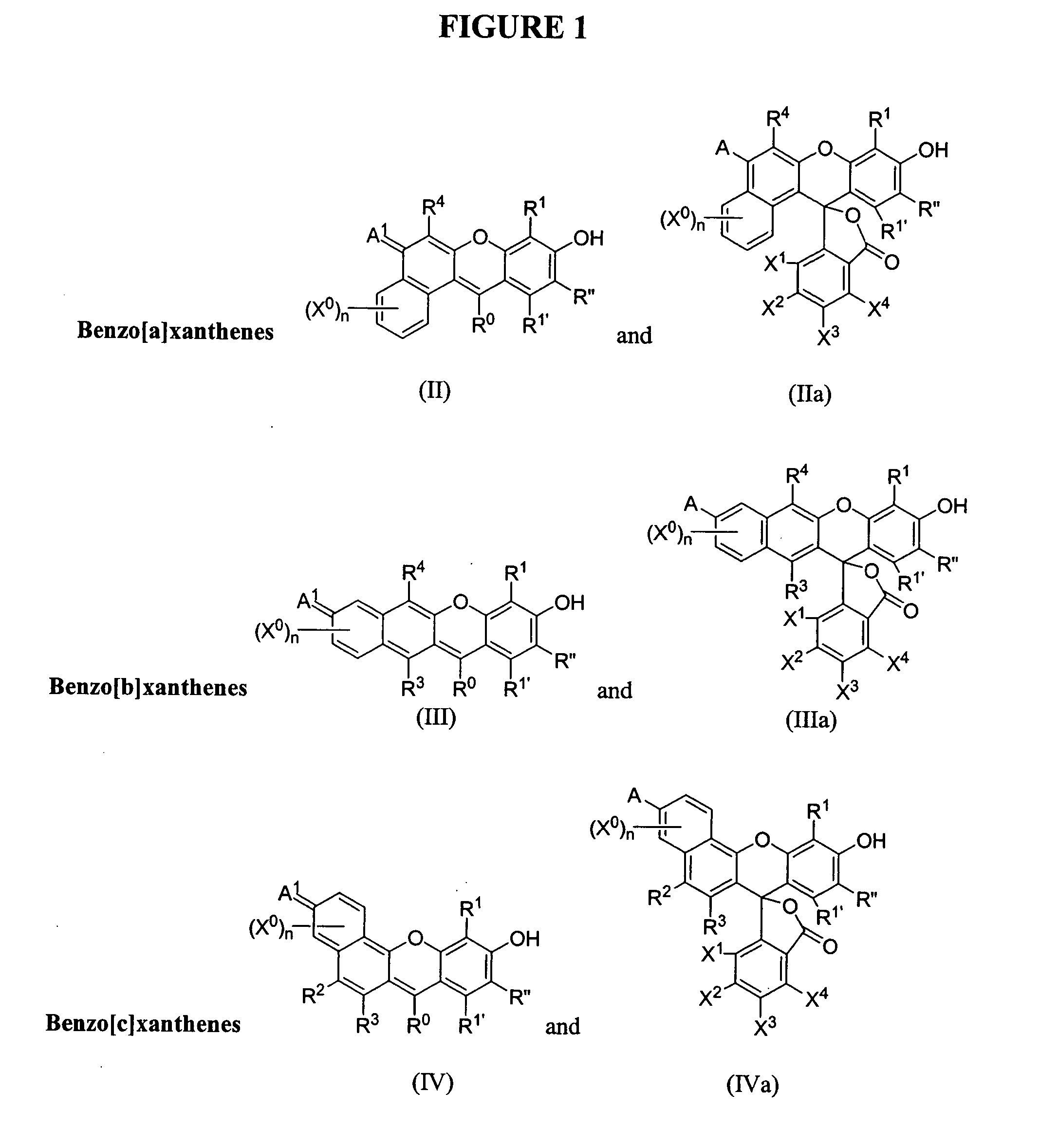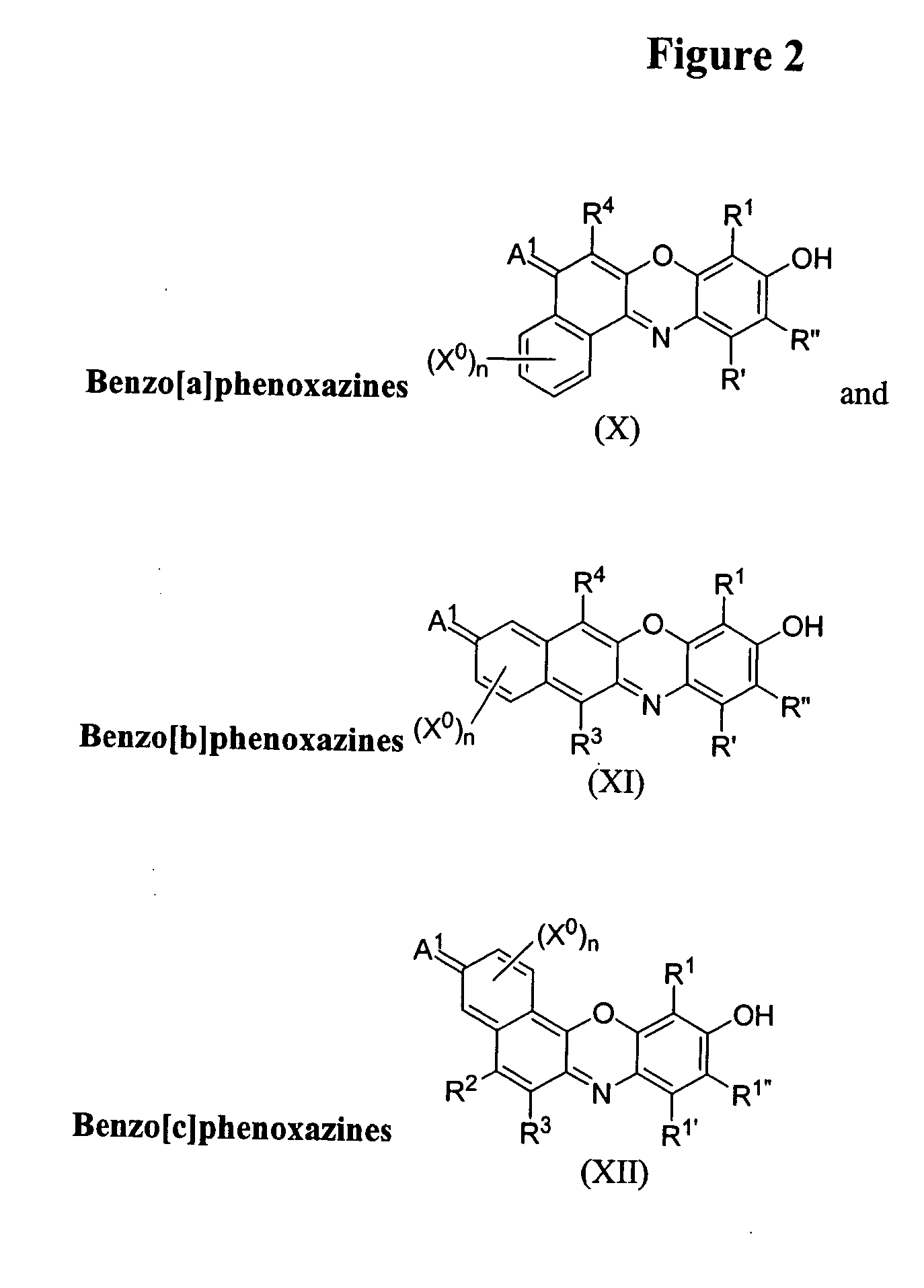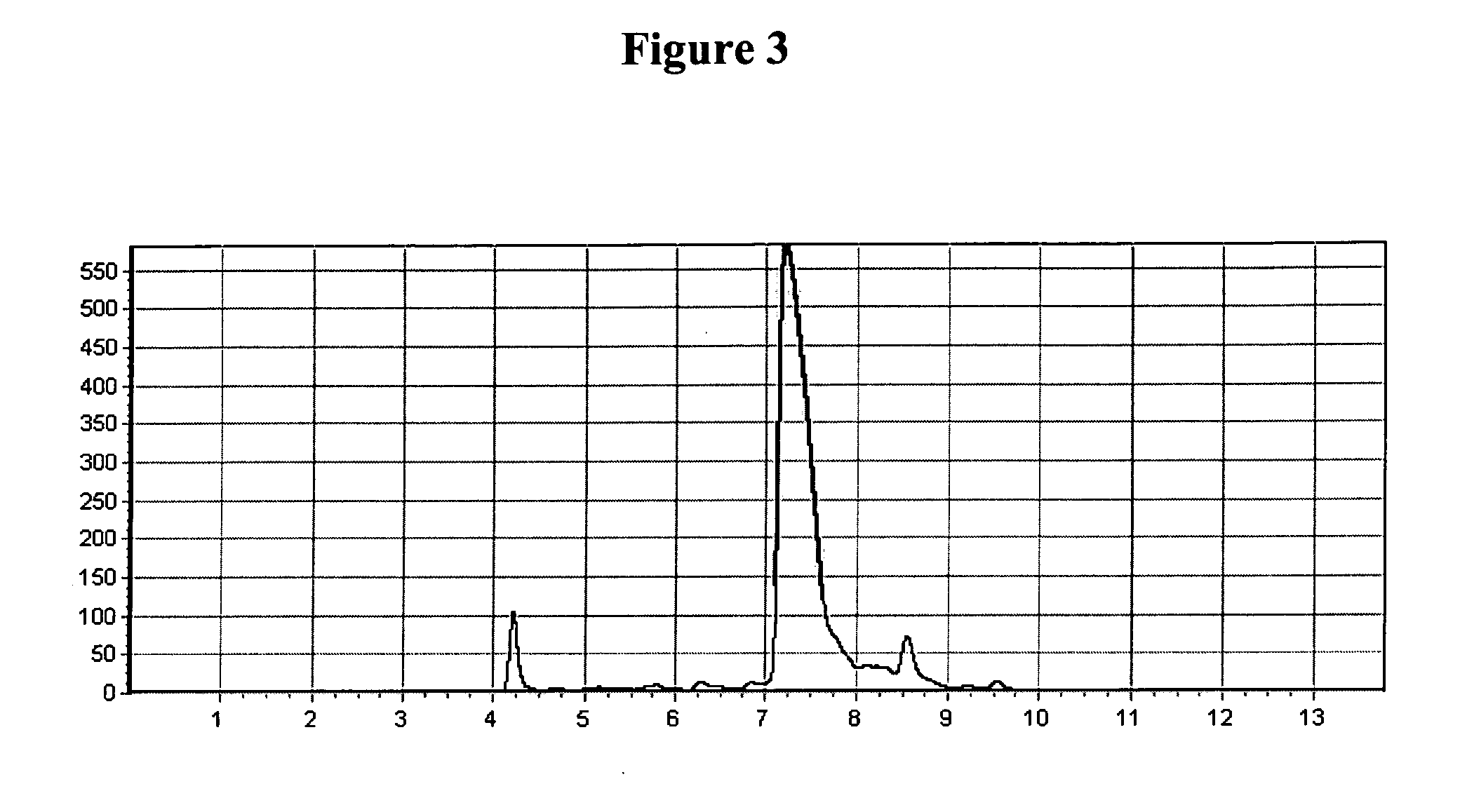Phosphonylated fluorescent dyes and conjugates
- Summary
- Abstract
- Description
- Claims
- Application Information
AI Technical Summary
Problems solved by technology
Method used
Image
Examples
example 1
Bis(4-(2,2,2-trifluoroacetamido)butyl)phosphite (3)
[0186] This example demonstrates the synthesis of the novel phosphonylation reagent 3 as shown in Reaction Scheme 1.
[0187] A 250 mL flask was charged with magnetic stirring bar, compound 1 (see, J. Org. Chem. 62(20): 6712-6713 (1997)) (9.455 g, 51 mmol), pyridine (100 mL), and diphenylphosphite (2 (7.035 g, 25.5 mmol). The mixture was stirred for 1 h at room temperature, then concentrated on a rotary evaporator, diluted with ethyl acetate (200 mL) and washed with 10% citric acid (2×150 mL). Aqueous phase was re-extracted with ethyl acetate (100 mL) and organic phases were combined, washed with brine (100 mL), dried over Na2SO4 and concentrated in vacuo. Residue was chromatographed on silica eluting, first, with ethyl acetate to separate phenol and, second, with acetone to elute the desired phosphite 3. Concentration of the pure product fractions gave 8.0 g, (75%) of the phosphite 3 as viscous liquid. 1H NMR (dmso-d6): 9.44 (brs, 2...
example 2
[0188] This example illustrates the synthesis of a protected 4′,4,5,6,7-pentachloro-7′-phosphono-fluorescein analog 11 as shown in Reaction Scheme 2.
Compound 5
[0189] A 0.5 L round bottom flask equipped with magnetic stirring bar was charged with 4-bromoresorcinol (3.62 g, 19.2 mmol), compound 4 (8.264 g, 16.0 mmol, prepared as described in WO 03 / 023357) and trifluoroacetic acid (50 mL). Methanesulfonic acid (50 mL) was added and resultant mixture was stirred at +80° C. for 3 h. Resultant red solution was cooled and poured onto ice (˜400 g). Obtained solid was collected by filtration on sintered glass funnel, washed with water (3×40 mL) and dissolved in a mixture of water (300 mL) and triethylamine (10 mL). The solution was heated to boiling point with stirring, then cooled and acidified to pH˜2 by adding aqueous hydrochloric acid. The resultant fine suspension was extracted with ethyl acetate, washed twice with brine, dried over MgSO4. Concentration afforded crude product 5, whic...
example 3
Protected 4-chloro-6-phosphono-benzofluorescein analog (19)
[0194] This example illustrates the synthesis of a protected 4′-chloro-6-phosphonate benzofluorescein analog 19 as outlined in Reaction Scheme 3.
Compound 12
[0195] To a suspension of 4-bromophthalic anhydride (2.27 g, 10 mmol) in 30 mL of anhydrous 1,2-dichloroethane was added 3.3 g (25 mmol) of AlCl3 followed by methyl 3-(3-chloro-2,4-dihydroxyphenyl)propionate (WO03023357)(2.3 g, 10 mmol). The mixture was stirred for several minutes to give a tan solution. The reaction was refluxed for 30 min, then cooled and concentrated. The resultant gelatinous material was partitioned between cold 1N hydrochloric acid (70 mL) and ethyl acetate (100 mL). The organic phase was washed with saturated NaCl, dried over Na2SO4 and concentrated. The resultant oil was suspended in dichloromethane and cooled to initiate crystallization. The crystals were collected by filtration, washed with cold dichloromethane and dried to afford 2.3 g (51%)...
PUM
 Login to View More
Login to View More Abstract
Description
Claims
Application Information
 Login to View More
Login to View More - R&D
- Intellectual Property
- Life Sciences
- Materials
- Tech Scout
- Unparalleled Data Quality
- Higher Quality Content
- 60% Fewer Hallucinations
Browse by: Latest US Patents, China's latest patents, Technical Efficacy Thesaurus, Application Domain, Technology Topic, Popular Technical Reports.
© 2025 PatSnap. All rights reserved.Legal|Privacy policy|Modern Slavery Act Transparency Statement|Sitemap|About US| Contact US: help@patsnap.com



